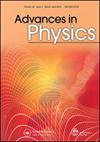Decoherence, entanglement and irreversibility in quantum dynamical systems with few degrees of freedom
IF 13.8
1区 物理与天体物理
Q1 PHYSICS, CONDENSED MATTER
引用次数: 119
Abstract
In this review we summarize and amplify recent investigations of coupled quantum dynamical systems with few degrees of freedom in the short-wavelength, semiclassical limit. Focusing on the correspondence between quantum and classical physics, we mathematically formulate and attempt to answer three fundamental questions. (i) How can one drive a small dynamical quantum system to behave classically? (ii) What determines the rate at which two single-particle quantum-mechanical subsystems become entangled when they interact? (iii) How does irreversibility occur in quantum systems with few degrees of freedom? These three questions are posed in the context of the quantum-classical correspondence for dynamical systems with few degrees of freedom, and we accordingly rely on two short-wavelength approximations to quantum mechanics to answer them: the trajectory-based semiclassical approach on the one hand, and random matrix theory on the other hand. We construct novel investigative procedures towards decoherence and the emergence of classicality out of quantumness in dynamical systems coupled to external degrees of freedom. In particular, we show how dynamical properties of chaotic classical systems, such as local exponential instability in phase space, also affects their quantum counterparts. For instance, it is often the case that the fidelity with which a quantum state is reconstructed after an imperfect time-reversal operation decays with the Lyapunov exponent of the corresponding classical dynamics. For related reasons, but perhaps more surprisingly, the rate at which two interacting quantum subsystems become entangled can also be governed by the subsystem's Lyapunov exponents. Our method allows us to differentiate quantum coherent effects (those related to phase interferences) from classical ones (those related to the necessarily extended envelope of quantal wavefunctions) at each stage in our investigations. This makes it clear that all occurrences of Lyapunov exponents we witness have a classical origin, although they require rather strong decoherence effects to be observed. We extensively rely on numerical experiments to illustrate our findings and briefly comment on possible extensions to more complex problems involving environments with many interacting dynamical systems, going beyond the uncoupled harmonic oscillators model of Caldeira and Leggett.少自由度量子动力系统中的退相干、纠缠和不可逆性
在这篇综述中,我们总结和扩大了在短波长半经典极限下的耦合量子动力系统的最新研究。专注于量子和经典物理之间的对应关系,我们用数学的方式表述并试图回答三个基本问题。(i)如何驱动一个小的动态量子系统表现经典?(ii)是什么决定了两个单粒子量子力学子系统在相互作用时纠缠的速率?(iii)不可逆性是如何在几个自由度的量子系统中发生的?这三个问题是在具有少量自由度的动力系统的量子-经典对应的背景下提出的,因此我们依靠量子力学的两种短波近似来回答它们:一方面是基于轨迹的半经典方法,另一方面是随机矩阵理论。我们构建了新的研究程序,以退相干和经典的出现,从量子力学系统耦合到外部自由度。特别是,我们展示了混沌经典系统的动力学特性,如相空间中的局部指数不稳定性,也会影响它们的量子对应物。例如,在不完美的时间反转操作后重建的量子态的保真度通常会随着相应经典动力学的李雅普诺夫指数而衰减。由于相关的原因,但也许更令人惊讶的是,两个相互作用的量子子系统纠缠的速率也可以由子系统的李雅普诺夫指数控制。我们的方法允许我们在研究的每个阶段区分量子相干效应(与相位干涉相关的效应)和经典效应(与量子波函数的必要扩展包络相关的效应)。这清楚地表明,我们看到的所有李雅普诺夫指数的出现都有一个经典的起源,尽管它们需要相当强的退相干效应才能被观察到。我们广泛地依靠数值实验来说明我们的发现,并简要地评论了可能扩展到更复杂的问题,涉及许多相互作用的动力系统的环境,超越了Caldeira和Leggett的不耦合谐振子模型。
本文章由计算机程序翻译,如有差异,请以英文原文为准。
求助全文
约1分钟内获得全文
求助全文
来源期刊

Advances in Physics
物理-物理:凝聚态物理
CiteScore
67.60
自引率
0.00%
发文量
1
期刊介绍:
Advances in Physics publishes authoritative critical reviews by experts on topics of interest and importance to condensed matter physicists. It is intended for motivated readers with a basic knowledge of the journal’s field and aims to draw out the salient points of a reviewed subject from the perspective of the author. The journal''s scope includes condensed matter physics and statistical mechanics: broadly defined to include the overlap with quantum information, cold atoms, soft matter physics and biophysics. Readership: Physicists, materials scientists and physical chemists in universities, industry and research institutes.
 求助内容:
求助内容: 应助结果提醒方式:
应助结果提醒方式:


